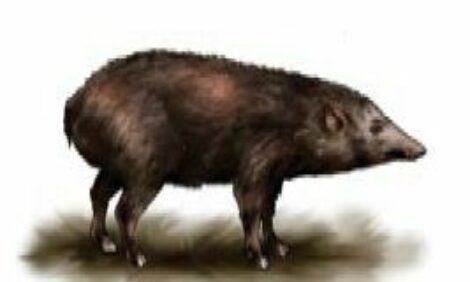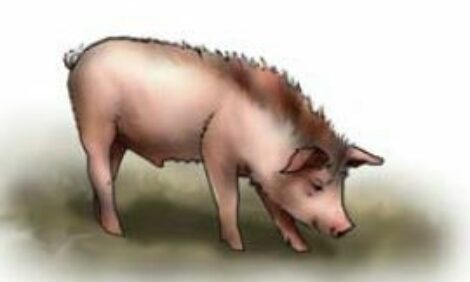



Ningxiang
The breed is of the Central China type and originated in the Hunan Province of China in the Central Subtropic belt. The breed is normally housed and hand-fed year-round, being a very domesticated breed. The Ningxiang breed is a commonly kept domestic pig with outstanding meat quality and a significant gene pool of organic resources. The Ningxiang Pig breed is also recognized as the agricultural treasures of the Hunan Province of China, in conjunction with Xiang lotus seeds and Wugang bronze goose, one of the few agricultural breeds to have this distinction. The breeding practice of the Ningxiang pig breed has a history of almost one thousand years. It has turned out to be a famous breed of pig in the world for its fragile, malleable and delicious meat. However, it has turned out to be an endangered variety of pig, owing to a variety of factors since the 1980s.
One of the most interesting things about the Ningxiang breed is its relationship to the porcine endogenous retrovirus. Screening and investigation of P.E.R in the supposed pig breeds may supply basic constraints to assess the biological protection of xenotransplantation to human beings from pigs. In this investigation, P.E.R was examined among the protection population of the Ningxiang pig breed. The result exposed that the distribution of the genotype of P.E.R was 100% subtype A, 100% subtype B, 100% and 100% subtype C. The environment sequences of P.E.R A and B showed 11 genetic copies were detected and revealed that there existed manifold variants of P.E.R A and B in the Ningxiang pig breed.
The results of the overturn transcriptase polymerase sequence response revealed that P.E.R had transcriptional activity in the Ningxiang Pig breeds. Additionally, the recombinant P.E.R were noticed in nearly all individuals of the Ningxiang pig breed. Because the recombinant P.E.R increases the possible infectious hazard, the Ningxiang pig breed may not be an appropriate contributor for the xenotransplantation to human beings. The comprehensive mitochondrial genome chain of the Ningxiang pig breed in the Hunan Province offers important information for additional study regarding genetic mechanism.
Ningxiang pigs are black and white pigs, and can have a silvery collar of hair around their neck. The back is slightly concave, and the belly is pouched and pendulous. The back fat is 4 cm thick, the average litter size is 11.5 over the breeding life. The Ningxiang pig is raised primarily for lard.






